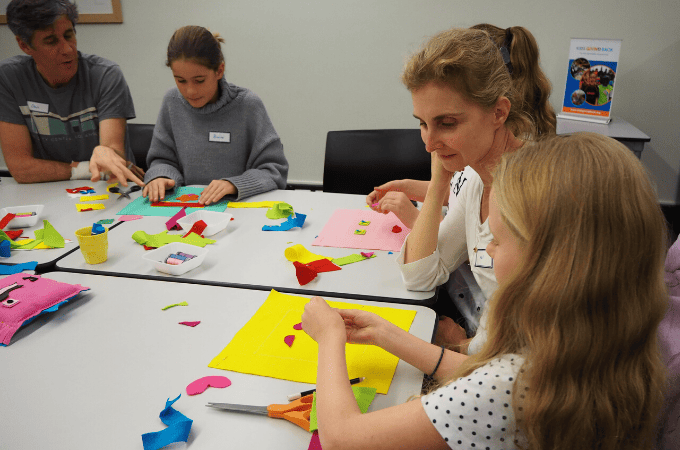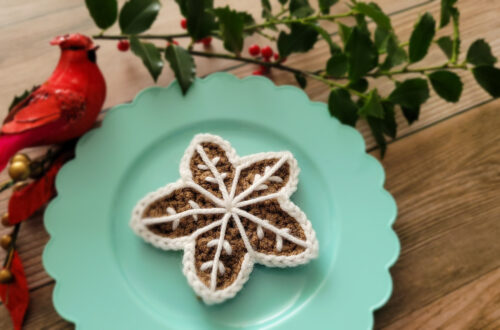Tips for Teaching Kids to Sew
Hi. My name is Trixi Symonds. I’m an Aussie and a softie designer and I’ve been teaching kids to sew for close on thirty years.
In 2016, I founded a global initiative called Sew a Softie which aims to teach anyone and everyone the joys of hand sewing. I receive lots of emails and messages, especially from parents and grandparents, asking for tips on how to start teaching their kids and grandkids to sew.
Even experienced sewers can find teaching their own kids challenging and I thought it might be interesting to collect together some of the tips I give.
1. When sewing with kids, make sure that it’s fun.
As adults, we sometimes relegate fun to the sidelines. Experience, however, has taught me that when kids are having fun, they are actively engaged and able to overcome problems that arise. Basically, having fun sets everything up for your kids to become skillful, confident sewers.
2. Stand back and let your kids do the work.
We have a deep emotional investment in wanting our kids to succeed. Unfortunately, this positive parental quality can push us to interfere with their work. Our kids know very well what they’ve done by themselves and what someone else has done for them. If we don’t give them room to take control of their own work, they won’t experience that irrepressible pride I see at the end of every workshop.
3. Let them make mistakes.
Their work will have blemishes. For example, kids often begin with large wonky stitches. That’s fine. They’ll improve with time. But what if they need small stitches to hold a weighting material, like rice grains, in? You can encourage them to sew smaller closer stitches but if they can’t, you can simply get them to sew a second line of stitches over the first. That usually solves the problem. The important thing is to avoid making them feel inadequate which makes them lose confidence in their own abilities.
4. Let your kids make their own creative decisions
Often, there’s room to let them choose the project they most want to make, the fabric, threads, stitches, decorative touches and color combinations. But be warned: their choices may not be what you think looks good. Especially where colors are concerned. Kids have their own way of using colors. I love to watch what they do.
5. Avoid thinking cheap tools and supplies are good enough.
Thread that constantly breaks, scissors that don’t cut cleanly and glues that don’t stick only fuel frustration. Quality tools cost more but they also work better and last. Twenty-five years ago, I was in New York and bought myself a pair of beautiful scallop-edged scissors from Clover. They still cut like new.
In addition to the above, making sewing a special time together is a good way to catch your kids attention as is combining sewing with something yummy you’ve made for the occasion. I always end my workshops with a tray of homemade chocolate crackles. Chocolate crackles are an Aussie treat, but anything yummy will do. New students always knew those chocolate crackles were coming! In their eyes, those chocolate crackles were an important part of the sewing experience.
One final point: Start simple!
Look for something that doesn’t take too long to finish. A good first project shouldn’t be too fiddly. Several years ago, I designed a softie that I call a zenki. I make all sorts of zenkis now. I think they’re the simplest softies in the universe. You only need two pieces of felt and a running stitch. If you want to start your kids off with a softie, here’s a really simple free zenki pattern.
Sew a Softie
Sew a Softie in July has people from around the world posting simple-to-sew softie tutorials every day in July. You can find links to the tutorials in the Sew a Softie facebook group and on Instagram. All these tutorials are free.
Sew a Softie’s Kid Ambassadors
Sew a Softie also has a thriving community of kid ambassadors who teach friends how to sew a softie. So, if you have a child who’d like to join in, you can find more info and register here.
Some great Clover tools to use with kids
- Chenille Needles (Art. No 234/24)
- Wonder Clips (Art. No 3183)
- Marbled Glass Head Pins (Art. No 2511)
- Scissors (Art. No 4940)
- Pom-Pom Maker (Art. No 3126)
- Mini Weaving Loom (Art. No 3176)
I hope the above tips help make sewing with your kids a positive and memorable experience for you both.
Stay connected with Clover on Facebook | Twitter | Instagram | Pinterest | YouTube | Ravelry
[mc4wp_form id=”11289″]






